Dang I've been manually updating this entire time... auto updates sounds appealing ngl
There are quite a few things odd about this article, chief among them, why is it posted on a law firm website? This isn't news, it's practically an opinion piece.
God, inject me with that hopium.
They probably won't for a while. They do, however, have helicopter destroyers that coincidentally support F-35 operations. However, please keep in mind that this isn't a carrier, but rather a helicopter destroyer. We may also expect to see helicopter cruisers in the future, but that's TBD.
/s if that wasn't obvious, they already very much have carriers even if they aren't exactly Nimitz-class carriers.
BattleBit Remastered - Update 2.1.1: Community Servers & API
Update 2.1.1 brings Community Servers, weapon adjustments, returning maps & modes, and more
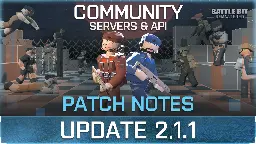
This might be overlooked, given all the great changes. But personally love that the update news window now only shows up once. It was sooo annoying before.
Ukrainian Counteroffensive Pierces Main Russian Defensive Line in Southeast
After three months of grinding advances in its Western-backed counteroffensive, Kyiv has accelerated its thrust along its main line of attack.
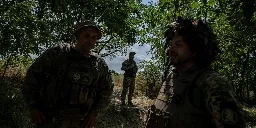
PAYWALL
Ukrainian forces have penetrated the main Russian defensive line in their country’s southeast, raising hopes of a breakthrough that would reinvigorate the slow-moving counteroffensive.
Ukrainian paratroopers are fighting through entrenched Russian positions on the edge of the village of Verbove, a Ukrainian officer in the area said. Ukrainian forces have also reached the main defensive line to the south of nearby Robotyne village, he said. Ukraine’s military confirmed advances toward Verbove and south of Robotyne, without giving details.
Describing the advance, the Ukrainian officer held up three fingers representing lines of attack through entrenched Russian positions on the western flank of Verbove, an agricultural village of some 1,000 residents before the war. The significance of the advance is that it marks the first time Ukraine has penetrated the main Russian defensive line, an extensive system of minefields, trenches and antitank obstacles covered by artillery.
Ukrainian forces are now working to expand the cracks in the line to create a hole large enough for Western-provided armored vehicles to push through with sufficient logistical support.
“It’s like inflating a ball,” the officer said.
Ukrainian advances in recent days have led to cautious optimism among Western intelligence services that Ukraine can retake the occupied city of Tokmak, a logistical hub for Russia, according to senior Western intelligence officials.
To be sure, there are still serious obstacles to turning the current penetration into a full-fledged breach. Russia is targeting Ukrainian troops there with heavy artillery fire directed by aerial drones, and there is no sign of a collapse in Russian lines. Russia appears to be sending reinforcements, including paratroopers, to help hold their positions.
Any breakthrough would be a major boost for Ukraine’s three-month-old counteroffensive, which has turned into a grinding, field-by-field advance rather than the lightning operation that Kyiv and its allies had envisaged.
The counteroffensive is aimed at slicing down to the Sea of Azov in Ukraine’s southeast, cutting Russian occupation forces in two and seizing back some of the nearly 20% of Ukrainian territory that Moscow holds. The West supplied Ukraine with hundreds of armored vehicles, including tanks, and trained thousands of troops for the operation.
During the early summer, Ukraine seized a handful of villages in the eastern Donetsk region and forced Russian troops back around the city of Bakhmut, but made little progress with its main push south toward the Sea of Azov from the city of Orikhiv.
Powerful Russian defenses thwarted initial assaults, so Ukraine switched to methodical advances by small teams on foot. The slow progress sparked intense behind-the-scenes debates between Washington and Kyiv over strategy and tactics.
But progress accelerated in August. Accurate counter-battery fire helped suppress Russian artillery. Infantry advances seized trenches and lines of trees along the edges of farm fields. Ukrainian troops took the village of Robotyne and pushed south toward Tokmak.
Ukraine deployed fresh troops, including powerful airborne units like the 82nd Air Assault Brigade, equipped with Western-made Stryker armored fighting vehicles. In recent days, Ukrainian forces fought their way into the outskirts of Verbove, posing what now appears to be the biggest threat to Russian lines.
The advance is facing fierce resistance. The Ukrainian officer said the Russians were so well dug in that his men found carpets and pictures hung on the walls of dugouts that they captured. They are facing elite Russian forces, including the 7th Guards Air Assault Division.
Russia is targeting Ukrainian troops and vehicles using heavy artillery fire guided by aerial drones and explosive drones directed from the ground by pilots wearing video goggles. In some places, there are so many drones flying that the Ukrainians call the phenomenon “Boryspil,” after the country’s main international airport in Kyiv.
U.S.-supplied cluster bombs are having a significant impact, soldiers said. Ukrainians on the offensive are using the munitions—which release dozens of smaller bomblets and can cause devastation over a broader area than ordinary artillery shells—to target Russian troops running across open ground, either to flee or to provide reinforcements.
Ukraine’s aim is to create a corridor through the Russian lines, pushing enemy artillery back far enough to allow Western-provided armored vehicles to move through the gap and receive supplies.
The bulge in the front line south of Orikhiv could allow Ukraine to move forward artillery and target Russian positions that were previously out of range.
A breach at Verbove could open a path to the Russian-occupied port cities of Berdyansk and Mariupol, while progress south of Robotyne could threaten Tokmak. Still, Russia has significant fortifications in the southeast, including a second thick defensive line.
For now, the Ukrainians must resupply front-line troops on foot or, at best, using motorcycles, all-terrain buggies or pickup trucks, rather than Western-supplied armored vehicles, which attract massive fire as soon as they appear on the battlefield.
“Western armored vehicles are not a panacea,” the officer said.
Ukrainian troops that manage to overtake Russian trenches but can’t occupy them instead set them afire because they can’t carry away abandoned weapons and ammunition, and don’t want Russians potentially retaking any equipment later.
Even small vehicles, used to avoid attracting attention, are vulnerable. The Ukrainian officer traveled by buggy in the direction of Verbove on Monday to retrieve the bodies of men who had been killed. As he sheltered in a trench to check his route, a Russian antitank missile hit his vehicle, leaving it a smoking wreck. His men carried the bodies out on foot, he said.
Ukrainian Counteroffensive Pierces Main Russian Defensive Line in Southeast
After three months of grinding advances in its Western-backed counteroffensive, Kyiv has accelerated its thrust along its main line of attack.
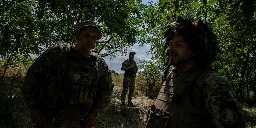
PAYWALL
Ukrainian forces have penetrated the main Russian defensive line in their country’s southeast, raising hopes of a breakthrough that would reinvigorate the slow-moving counteroffensive.
Ukrainian paratroopers are fighting through entrenched Russian positions on the edge of the village of Verbove, a Ukrainian officer in the area said. Ukrainian forces have also reached the main defensive line to the south of nearby Robotyne village, he said. Ukraine’s military confirmed advances toward Verbove and south of Robotyne, without giving details.
Describing the advance, the Ukrainian officer held up three fingers representing lines of attack through entrenched Russian positions on the western flank of Verbove, an agricultural village of some 1,000 residents before the war. The significance of the advance is that it marks the first time Ukraine has penetrated the main Russian defensive line, an extensive system of minefields, trenches and antitank obstacles covered by artillery.
Ukrainian forces are now working to expand the cracks in the line to create a hole large enough for Western-provided armored vehicles to push through with sufficient logistical support.
“It’s like inflating a ball,” the officer said.
Ukrainian advances in recent days have led to cautious optimism among Western intelligence services that Ukraine can retake the occupied city of Tokmak, a logistical hub for Russia, according to senior Western intelligence officials.
To be sure, there are still serious obstacles to turning the current penetration into a full-fledged breach. Russia is targeting Ukrainian troops there with heavy artillery fire directed by aerial drones, and there is no sign of a collapse in Russian lines. Russia appears to be sending reinforcements, including paratroopers, to help hold their positions.
Any breakthrough would be a major boost for Ukraine’s three-month-old counteroffensive, which has turned into a grinding, field-by-field advance rather than the lightning operation that Kyiv and its allies had envisaged.
The counteroffensive is aimed at slicing down to the Sea of Azov in Ukraine’s southeast, cutting Russian occupation forces in two and seizing back some of the nearly 20% of Ukrainian territory that Moscow holds. The West supplied Ukraine with hundreds of armored vehicles, including tanks, and trained thousands of troops for the operation.
During the early summer, Ukraine seized a handful of villages in the eastern Donetsk region and forced Russian troops back around the city of Bakhmut, but made little progress with its main push south toward the Sea of Azov from the city of Orikhiv.
Powerful Russian defenses thwarted initial assaults, so Ukraine switched to methodical advances by small teams on foot. The slow progress sparked intense behind-the-scenes debates between Washington and Kyiv over strategy and tactics.
But progress accelerated in August. Accurate counter-battery fire helped suppress Russian artillery. Infantry advances seized trenches and lines of trees along the edges of farm fields. Ukrainian troops took the village of Robotyne and pushed south toward Tokmak.
Ukraine deployed fresh troops, including powerful airborne units like the 82nd Air Assault Brigade, equipped with Western-made Stryker armored fighting vehicles. In recent days, Ukrainian forces fought their way into the outskirts of Verbove, posing what now appears to be the biggest threat to Russian lines.
The advance is facing fierce resistance. The Ukrainian officer said the Russians were so well dug in that his men found carpets and pictures hung on the walls of dugouts that they captured. They are facing elite Russian forces, including the 7th Guards Air Assault Division.
Russia is targeting Ukrainian troops and vehicles using heavy artillery fire guided by aerial drones and explosive drones directed from the ground by pilots wearing video goggles. In some places, there are so many drones flying that the Ukrainians call the phenomenon “Boryspil,” after the country’s main international airport in Kyiv.
U.S.-supplied cluster bombs are having a significant impact, soldiers said. Ukrainians on the offensive are using the munitions—which release dozens of smaller bomblets and can cause devastation over a broader area than ordinary artillery shells—to target Russian troops running across open ground, either to flee or to provide reinforcements.
Ukraine’s aim is to create a corridor through the Russian lines, pushing enemy artillery back far enough to allow Western-provided armored vehicles to move through the gap and receive supplies.
The bulge in the front line south of Orikhiv could allow Ukraine to move forward artillery and target Russian positions that were previously out of range.
A breach at Verbove could open a path to the Russian-occupied port cities of Berdyansk and Mariupol, while progress south of Robotyne could threaten Tokmak. Still, Russia has significant fortifications in the southeast, including a second thick defensive line.
For now, the Ukrainians must resupply front-line troops on foot or, at best, using motorcycles, all-terrain buggies or pickup trucks, rather than Western-supplied armored vehicles, which attract massive fire as soon as they appear on the battlefield.
“Western armored vehicles are not a panacea,” the officer said.
Ukrainian troops that manage to overtake Russian trenches but can’t occupy them instead set them afire because they can’t carry away abandoned weapons and ammunition, and don’t want Russians potentially retaking any equipment later.
Even small vehicles, used to avoid attracting attention, are vulnerable. The Ukrainian officer traveled by buggy in the direction of Verbove on Monday to retrieve the bodies of men who had been killed. As he sheltered in a trench to check his route, a Russian antitank missile hit his vehicle, leaving it a smoking wreck. His men carried the bodies out on foot, he said.
The pontiff celebrated the reigns of Russian czars who subjugated Ukraine for their “great culture and great humanity.”
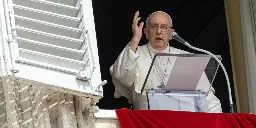
cross-posted from: https://lemm.ee/post/5780512 >ROME—Pope Francis praised 18th-century Russian emperors whom President Vladimir Putin has invoked as models for his territorial annexations in Ukraine, in the pontiff’s latest controversial statement relevant to the war. > > On Friday, speaking by video to a gathering of Russian Catholic youth in St. Petersburg, Pope Francis urged them to follow in the path of Peter the Great and Catherine the Great, whom he called rulers of a “great, enlightened empire of great culture and great humanity.” > > The comments on Peter and Catherine, which came at the end of the pope’s speech, weren’t included in the official transcript released by the Vatican, but were released by the Catholic diocese of Moscow and later in a video from Siberian Catholic television, a church agency. > > Putin has cited Peter, who expanded Russian territory and curtailed Ukrainian autonomy, to justify the current invasion. Putin has used the term Novorossiya, or New Russia, for Russian-occupied southern Ukraine—using a term that dates back to Russia’s conquest of southern Ukraine under Catherine in 1764. > > Catherine also harbored the Jesuit order, of which Pope Francis is a member, during the order’s suppression by Rome in the late 18th and early 19th century. > > The Ukrainian government declined to comment, but the pope’s remarks drew angry reactions on social media, especially in countries near Russia. Former Estonian President Toomas Hendrik Ilves called the comments “truly revolting” on X, formerly known as Twitter. Nexta, a Belarusian media outlet based in Warsaw, Poland, posted on the same platform: “By the way, the Catholics of Poland, Lithuania and Belarus raised uprisings three times against this ‘enlightened empire’.” > > In a statement released on Monday afternoon, the Vatican’s embassy to Kyiv rejected suggestions that “Pope Francis might have encouraged young Russian Catholics to draw inspiration from historical Russian figures known for imperialistic and expansionist ideas and actions that negatively impacted neighboring populations, including the Ukrainian people.” > > “Pope Francis has never endorsed imperialistic notions. On the contrary, he is a staunch opponent and critic of any form of imperialism or colonialism across all peoples and situations,” the statement said. > > Pope Francis has frequently decried Ukrainian suffering since Russia’s full-scale invasion in February 2022, but he has refrained from explicitly condemning Moscow for the war, while suggesting it may have been provoked by the enlargement of the North Atlantic Treaty Organization in Europe’s east. The pope’s stance has drawn criticism from Ukrainians including leaders of the Catholic Church there. > > The pope has repeatedly cast the war in Ukraine as a struggle between the Russian and U.S. superpowers, with Ukraine as a victim caught in the middle. “There are imperial interests at stake, not just the Russian empire, which has been around since Peter the Great and Catherine the Great, but the other empires too. There are these empires. And empires put nations in second place,” the pope said in a March interview with Swiss public television. > > The Vatican has offered to broker a peace agreement in Ukraine, and Italian Cardinal Matteo Zuppi has traveled to Kyiv, Moscow and Washington as the pope’s envoy in pursuit of that mission. But neither Ukraine or Russia has shown interest in mediation. > > In May, Ukrainian President Volodymyr Zelensky met the pope in Rome and called on him to support Kyiv’s formula for peace, based on the withdrawal of Russia’s invasion forces, the restoration of Ukraine’s internationally recognized territory, war-crimes prosecutions and reparations.
The pontiff celebrated the reigns of Russian czars who subjugated Ukraine for their “great culture and great humanity.”
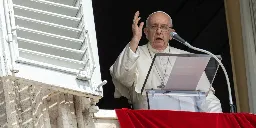
ROME—Pope Francis praised 18th-century Russian emperors whom President Vladimir Putin has invoked as models for his territorial annexations in Ukraine, in the pontiff’s latest controversial statement relevant to the war.
On Friday, speaking by video to a gathering of Russian Catholic youth in St. Petersburg, Pope Francis urged them to follow in the path of Peter the Great and Catherine the Great, whom he called rulers of a “great, enlightened empire of great culture and great humanity.”
The comments on Peter and Catherine, which came at the end of the pope’s speech, weren’t included in the official transcript released by the Vatican, but were released by the Catholic diocese of Moscow and later in a video from Siberian Catholic television, a church agency.
Putin has cited Peter, who expanded Russian territory and curtailed Ukrainian autonomy, to justify the current invasion. Putin has used the term Novorossiya, or New Russia, for Russian-occupied southern Ukraine—using a term that dates back to Russia’s conquest of southern Ukraine under Catherine in 1764.
Catherine also harbored the Jesuit order, of which Pope Francis is a member, during the order’s suppression by Rome in the late 18th and early 19th century.
The Ukrainian government declined to comment, but the pope’s remarks drew angry reactions on social media, especially in countries near Russia. Former Estonian President Toomas Hendrik Ilves called the comments “truly revolting” on X, formerly known as Twitter. Nexta, a Belarusian media outlet based in Warsaw, Poland, posted on the same platform: “By the way, the Catholics of Poland, Lithuania and Belarus raised uprisings three times against this ‘enlightened empire’.”
In a statement released on Monday afternoon, the Vatican’s embassy to Kyiv rejected suggestions that “Pope Francis might have encouraged young Russian Catholics to draw inspiration from historical Russian figures known for imperialistic and expansionist ideas and actions that negatively impacted neighboring populations, including the Ukrainian people.”
“Pope Francis has never endorsed imperialistic notions. On the contrary, he is a staunch opponent and critic of any form of imperialism or colonialism across all peoples and situations,” the statement said.
Pope Francis has frequently decried Ukrainian suffering since Russia’s full-scale invasion in February 2022, but he has refrained from explicitly condemning Moscow for the war, while suggesting it may have been provoked by the enlargement of the North Atlantic Treaty Organization in Europe’s east. The pope’s stance has drawn criticism from Ukrainians including leaders of the Catholic Church there.
The pope has repeatedly cast the war in Ukraine as a struggle between the Russian and U.S. superpowers, with Ukraine as a victim caught in the middle. “There are imperial interests at stake, not just the Russian empire, which has been around since Peter the Great and Catherine the Great, but the other empires too. There are these empires. And empires put nations in second place,” the pope said in a March interview with Swiss public television.
The Vatican has offered to broker a peace agreement in Ukraine, and Italian Cardinal Matteo Zuppi has traveled to Kyiv, Moscow and Washington as the pope’s envoy in pursuit of that mission. But neither Ukraine or Russia has shown interest in mediation.
In May, Ukrainian President Volodymyr Zelensky met the pope in Rome and called on him to support Kyiv’s formula for peace, based on the withdrawal of Russia’s invasion forces, the restoration of Ukraine’s internationally recognized territory, war-crimes prosecutions and reparations.